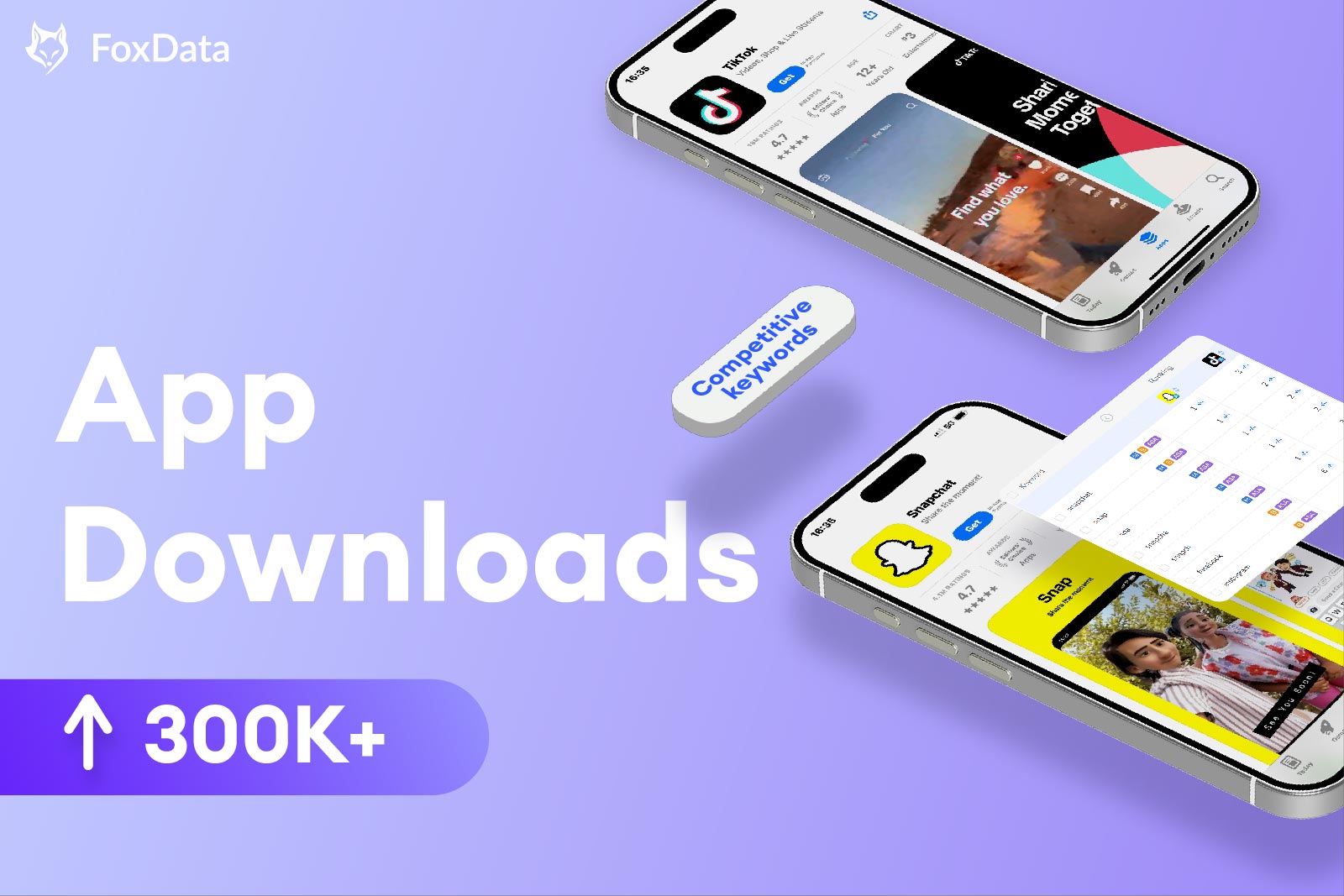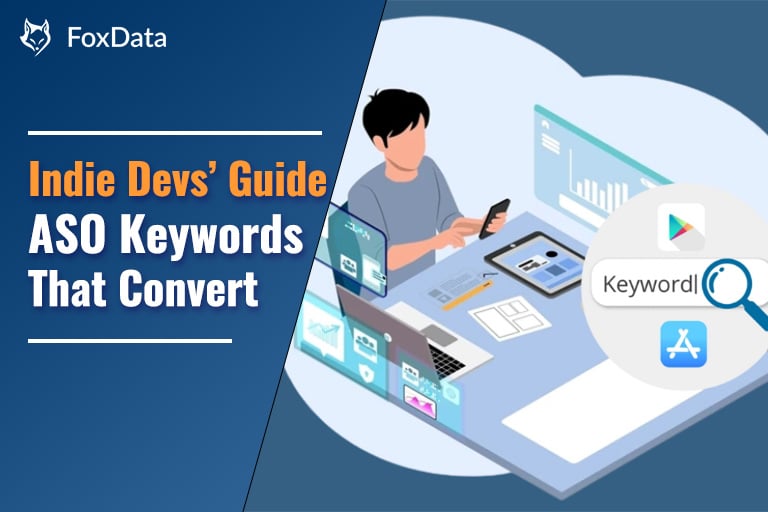The Comprehensive Guide for Promoting Card Games in the 2024 Market

Navigating the marketing maze for mobile card games can be overwhelming, particularly if you're new to the realm of mobile game marketing.
Table of Contents
☑️ Mobile Card Games Market Overview☑️ Top Performers in 2023
☑️ Tips to Increase User Base for Card Games
☑️ Current Trends in Card Game Advertising Creatives
Mobile Card Games Market Overview
Entering or expanding within the mobile card game sector necessitates a robust understanding of the market.
Here's a snapshot of the industry's vitality:
In 2023, the card games market boasted revenues of $6.4 𝑏𝑖𝑙𝑙𝑖𝑜𝑛, billion by 2030 at a CAGR of 7.7%. The revenue streams are intriguing, with in-app purchases accounting for one-third and in-app ads for two-thirds. Each download brings in an average revenue of $5.39.
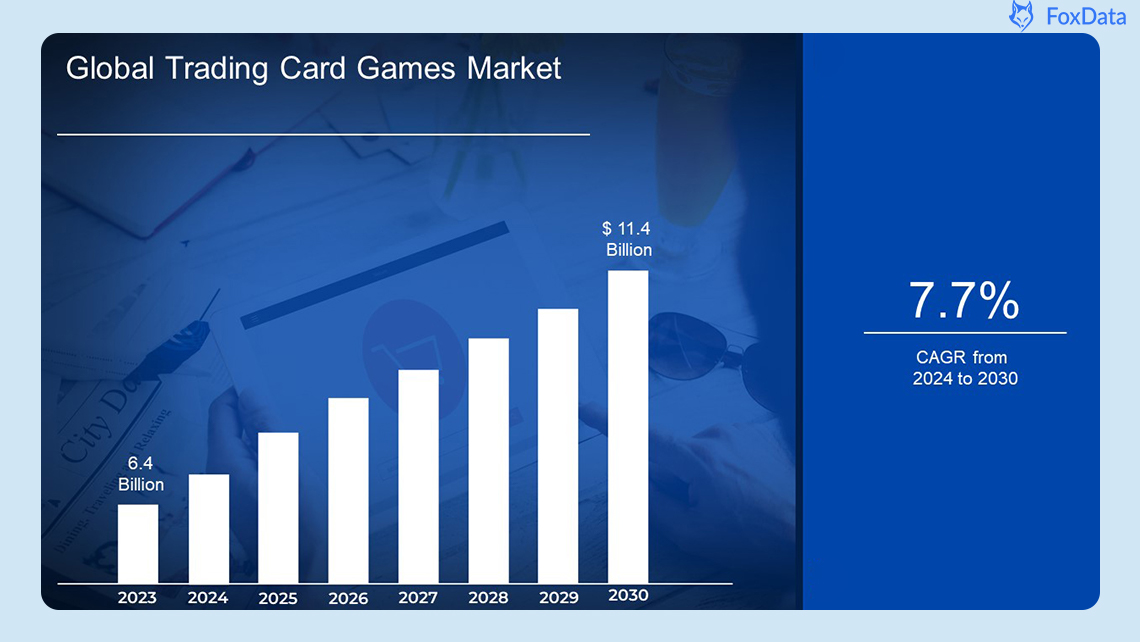
Top Performers in 2023

Tips to Increase User Base for Card Games
The thriving mobile card games market is ripe for the taking, but success hinges on strategic marketing.
Tip 1: Target Audience Identification
Pinpointing your target audience is the cornerstone of effective marketing. This step is non-negotiable if you aim to hit the mark with your campaigns. Mobile card game players typically seek casual entertainment, and understanding this preference is key to tailoring your marketing efforts.
Tip 2: Ad Network Selection
The choice of ad networks is a critical factor in the marketing process. This is because the most suitable ad networks can enhance your marketing campaign's reach, targeting precision, and return on investment.
In the realm of card game marketing, it's not just beneficial to engage with multiple ad networks—it's usually vital for broadening your advertising reach. This method capitalizes on the distinct advantages of each network, ensuring your marketing efforts are as effective as possible.
When evaluating ad networks, it's important to monitor key performance indicators (KPIs) such as click-through rate (CTR), cost per install (CPI), and lifetime value (LTV).
Research suggests that Facebook, Google AdMob, AppLovin, and FoxAdvert are leading sources for card game ad impressions.
Here's a quick overview of what each offers:
- Facebook: Provides unmatched demographic targeting and has a vast user base.
- Google AdMob: Known for its scalability and robust analytics.
- AppLovin: Excels in data analytics and optimizing creative content.
- FoxAdvert: Renowned for user acquisition, particularly for mobile games.
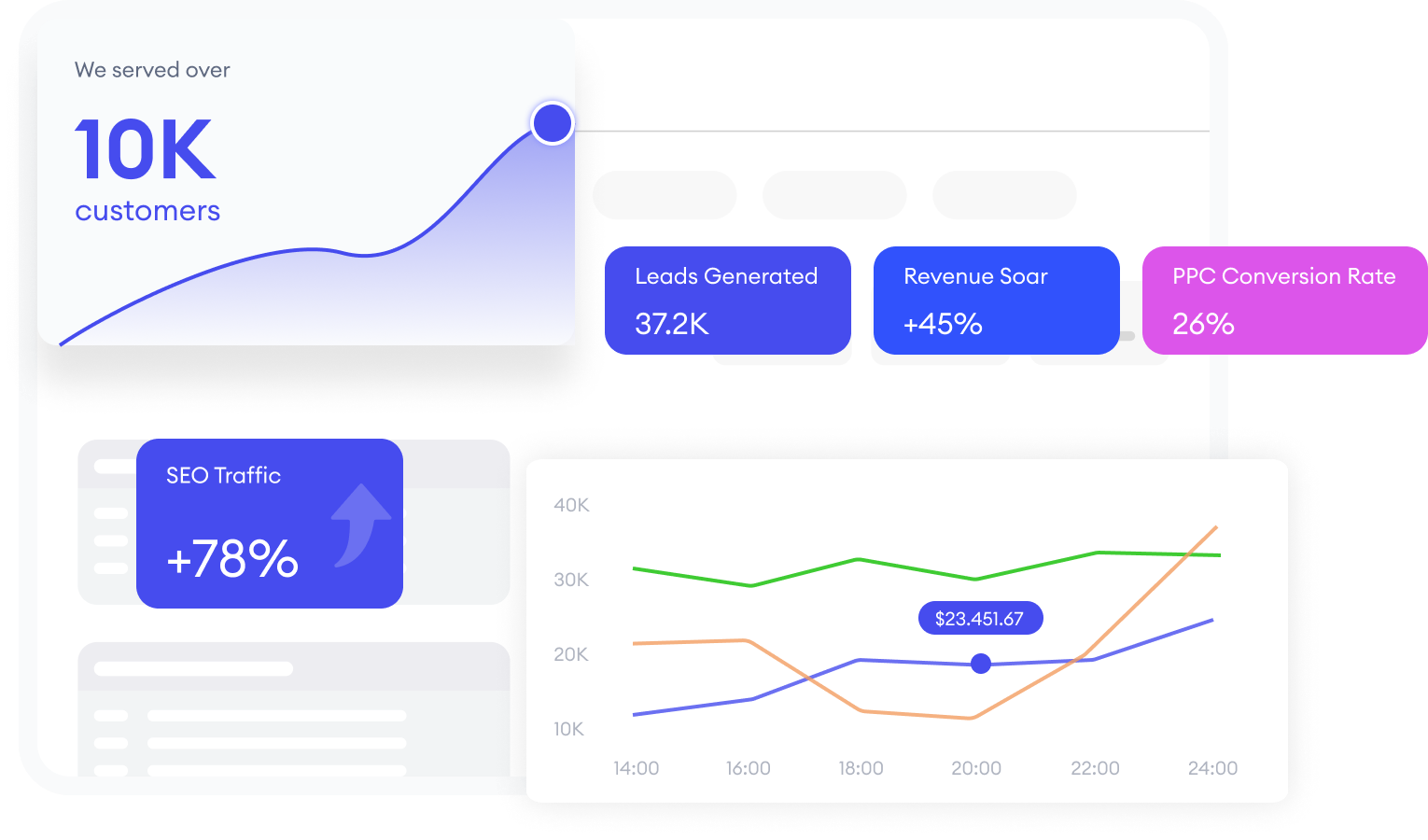
Tip 3: Ad Creative Balance
For effective card game marketing, it's crucial to find the right balance between the number of ad creatives and their quality.
Diversity in ad creatives is necessary because a single advertisement won't resonate with every potential player. It's also important to create multiple versions of ads for A/B testing and to measure their effectiveness.
👏Expert Note: If you're struggling to come up with ideas for ad creatives, consider using FoxData. It's an excellent resource for discovering what your competitors are doing and gaining insights into industry trends. Our ad experts regularly use it to tailor ads for various countries, as it provides access to a diverse range of ads from different countries and categories of ad creatives.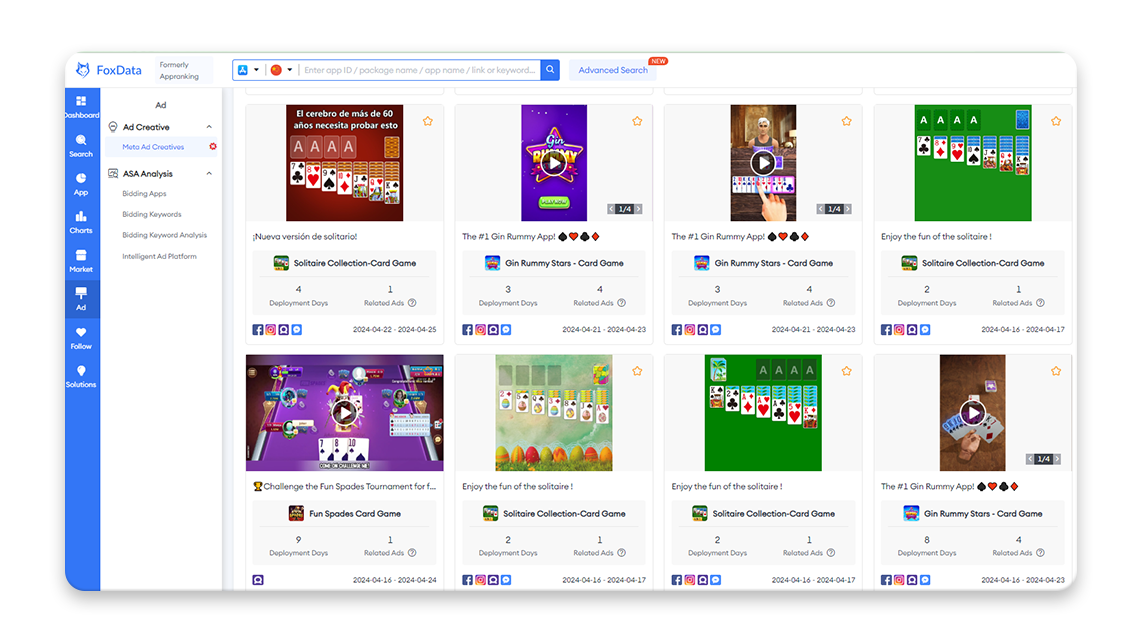
However, the abundance of ads should not compromise their quality. In a saturated mobile gaming market, standout ads are key to capturing users' attention.
While it's wise to follow current trends in card game advertising, innovation can also pay off. Don't hesitate to experiment with different formats, designs, or calls to action, ensuring they align with your broader marketing goals.
Data-driven decision-making is essential.
Monitoring metrics like cost per install (CPI) and player retention rates is important to assess the success of your ads. These indicators will help you refine your marketing approach for better results.
Tip 4: Leverage ASO
Paid advertising is often the center of attention in user acquisition tactics, but the potential of App Store Optimization (ASO) is frequently underestimated by game developers. An optimized app store presence is a powerful tool for attracting new players organically, bypassing the costs associated with paid ads.
Consider the user journey: a player intrigued by your card game's ad will end up on its app store page. This is where a compelling page can make a critical difference, nudging them towards downloading your game.
Visual components like app icons, screenshots, and promotional videos are key to making a strong first impression. While it's beneficial to be aware of what competitors are doing, it's crucial to distinguish your game to avoid getting lost in a crowded marketplace.
Text elements such as the game's title, description, and keywords also play a significant role. This is where you can apply search engine optimization (SEO) principles within the app store environment. Utilizing ASO tools to conduct keyword research can enhance your game's visibility in search results.
👏Expert Note: If you have no ideas of analyzing your Visual components and Text elements, why not do competitor research on FoxData for free? You can track competitors under the feature "Keywords Ranked", where you can make a comprehensive analysis of competitors' Keywords. Beyond that, you can view the changes of your competitor's keywords directly.
The biggest surprise is that you can also track and find more keywords for your own app, as well as optimize your Visual components and text elements by ASO Reports.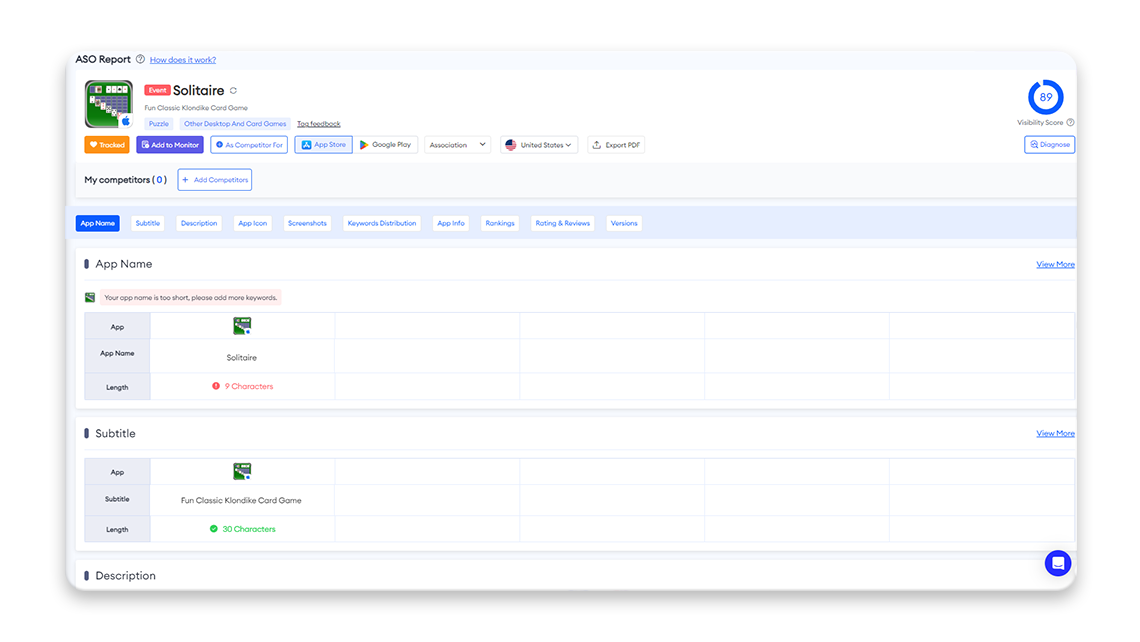
Additional ASO strategies to enhance user acquisition include:
- Regularly update your app store description to reflect new updates, features, or events within the game.
- Employ A/B testing to find the most effective visual and textual elements for your app store page.
- Actively monitor and respond to app reviews and ratings, addressing any issues to improve user satisfaction and trust.
Or you may want to optimize your app now; just join FoxData and start your keyword research! Get started with your free trial today!
 Explore 2026 Mobile Game Marketing Strategies
Explore how industry experts break down 2026 mobile game marketing trends, creative strategies, and scalable growth approaches.
Learn More
Explore 2026 Mobile Game Marketing Strategies
Explore how industry experts break down 2026 mobile game marketing trends, creative strategies, and scalable growth approaches.
Learn More
Current Trends in Card Game Advertising Creatives

Ad creative trends are dynamic and influenced by a variety of factors such as player behavior, advertising costs, and market competition. Here, we'll explore some of the prevailing trends and examples that are currently informing card game marketing strategies. These insights are designed to help you develop ads that are not only eye-catching but also effective in driving user acquisition.
Emphasizing Simplicity with Gameplay Ads
The power of simplicity can't be overstated, especially when it comes to ads that feature gameplay footage.
The effectiveness of gameplay ads lies in their ability to provide a clear preview of what the game is about, offering potential players a glimpse into the experience they can expect. This level of transparency is often a decisive factor that leads to a download.
Many gameplay ads are designed with a theme of relaxation, featuring serene backgrounds and calming music, which appeals to those looking to relax or fill their leisure time.
To create a successful gameplay video ad for your card game, consider the following strategies:
- Utilize high-quality footage that is representative of the actual game.
- Focus on showcasing the game's unique features or mechanics in a way that is easy for the viewer to digest.
- If possible, include user testimonials or reviews to add credibility.
- Aim for a compact format, with the ideal ad length being between 15 to 30 seconds.
🎬
Content will be displayed after page load
Content will be displayed after page load
Interactive Engagement with Playable Ads
Playable ads, which are interactive demos within the ad itself, are highly effective for card games.
These ads are successful because they provide a hands-on experience, allowing potential players to understand the game's mechanics firsthand.
Such ads are especially useful for card games that may not be as instantly recognizable. They serve as mini-tutorials that introduce the basics and encourage players to download the full game for a complete experience.
When designing a playable ad for your card game, consider these points:
- Ensure the interactive experience is brief yet immersive, capturing the essence of your game within a 30-second timeframe.
- Showcase the most engaging or unique aspects of the game to attract players.
- Facilitate a smooth transition from the ad to the app store for an easy download process.
🎬
Content will be displayed after page load
Content will be displayed after page load
Capitalizing on Authenticity with UGC Ads
User-generated content (UGC) ads utilize the authenticity of content created by fans or influencers to promote your card game. These ads often appear as if they are made by genuine enthusiasts, which can enhance their credibility and relatability.
To amplify the impact, you can engage celebrities to endorse your game. For example, Solitaire by MobilityWare employed Brian Baumgartner, known as Kevin from The Office, to create a cameo. While his non-commercial Cameo videos are relatively affordable, commercial licensing for advertising is more expensive but can offer substantial ROI.
The critical factor for UGC ads, even with celebrity involvement, is to preserve the sense of authenticity. The objective is to convey that the celebrity genuinely enjoys the game and is sharing it with their audience.
🎬
Content will be displayed after page load
Content will be displayed after page load
Showcasing Meta-Layers in Ads
Ads that highlight the meta-layers of a card game, such as additional farming, building, or exploration elements, can attract a broader audience.
These ads are centered around motivation-based creatives that appeal to users with various gaming interests, not just card games. For instance, Solitaire Grand Harvest incorporates farming and mini-games, and its ads often focus on these aspects to appeal to a wider range of players.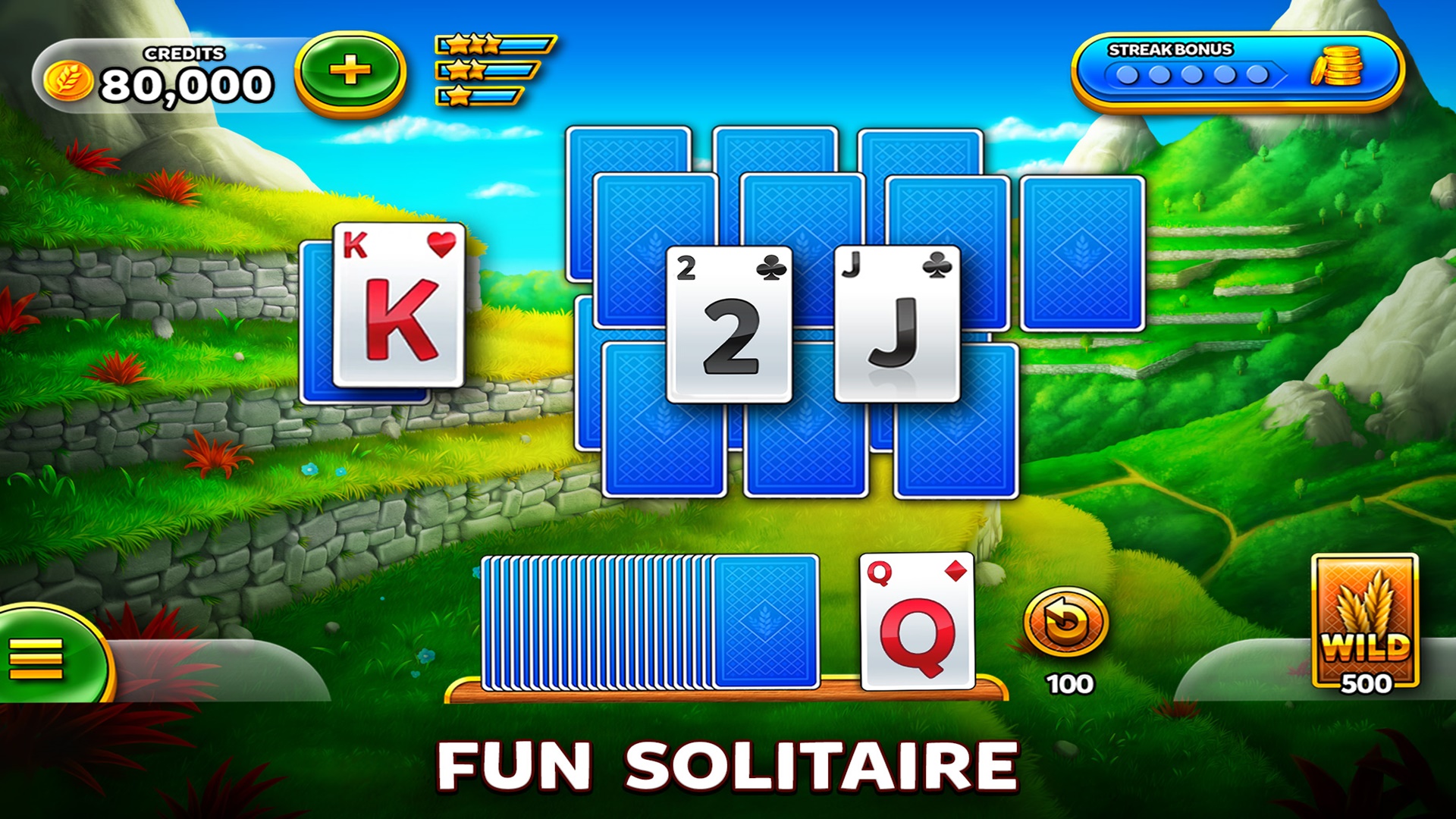
Incorporating Humor into Card Game Marketing Ads
Humor has a universal appeal, and it's no surprise that it's effective in advertising too. Successful card game marketing often includes humorous elements that resonate with viewers, making the ads more engaging, relatable, and shareable.
For instance, the UNO! mobile game ad cleverly used the Swole Doge/Chad Doge meme to draw viewers in, combining humor with actual gameplay footage to great effect.
To infuse humor into your card game ads, you can:
- Meme Integration: Utilize popular memes that fit your game's theme or message, ensuring they resonate with your target audience.
- Witty Taglines: Craft clever or amusing taglines that stick in the viewer's mind.
- Unexpected Twists: Introduce surprising elements that align with your game's features to engage viewers.
- Internet Culture: Weave in trending phrases, hashtags, or TikTok trends to stay relevant.
- User-Generated Humor: Feature amusing reviews or comments about your game, with user permission, to add authenticity.

Seasonal Ads to Enhance Engagement
Seasonal ads are particularly effective due to their ability to connect with audiences during various holidays and events, often leading to increased user engagement and acquisition.
This strategy works because it taps into the emotions associated with the season, making the game more relatable and enticing.
For standout seasonal ads, consider:
- Thematic Visuals: Update your game's visuals to reflect the current season or holiday.
- Seasonal Card Designs: Customize card appearances with holiday-themed designs.
- Holiday Audio: Incorporate music or sound effects that match the season.
- Time-Limited Events: Promote in-game events that are exclusive to the holiday season to create urgency.
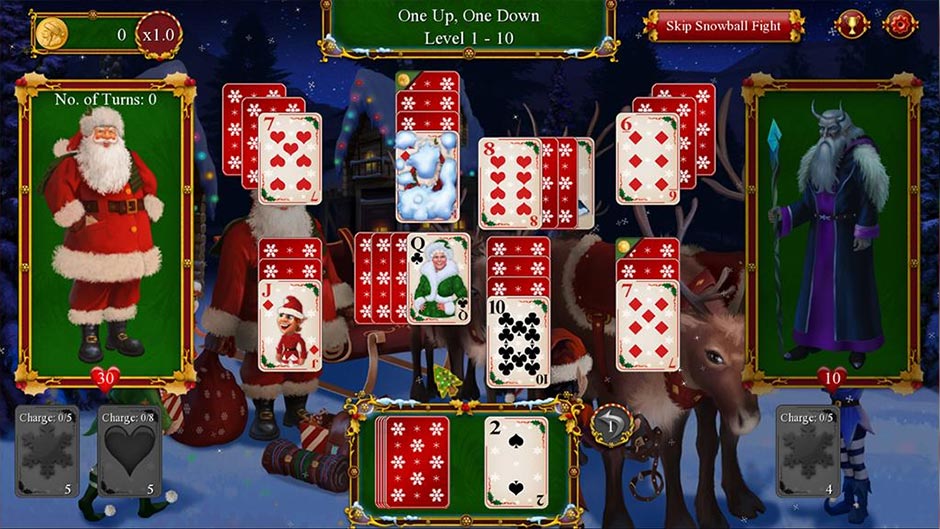
Traditional Image/Banner Ads in the Digital Era
Despite the prevalence of video and interactive ads, traditional image or banner ads remain relevant, especially for retargeting campaigns and audiences that prefer a more classic approach.
Image/banner ads are less intrusive, simpler to produce, and can be finely targeted. They work well for games with a casual or traditional playstyle.
To create effective image/banner ads:
- High-Quality Graphics: Ensure your visuals are sharp and attention-grabbing.
- Clear Messaging: Use the limited space to convey a straightforward message about your game's unique selling points.
- Compelling CTA: Employ action-oriented phrases for your call-to-action.
- Branding Consistency: Maintain uniformity in your branding elements across all ads.
- Ad Size Variations: Test different ad sizes for optimal performance on various platforms.
- Ad Placement Strategy: Tailor the ad design based on its intended placement.
- Urgency: If relevant, use phrases like "Limited Time Offer" to prompt quicker engagement.
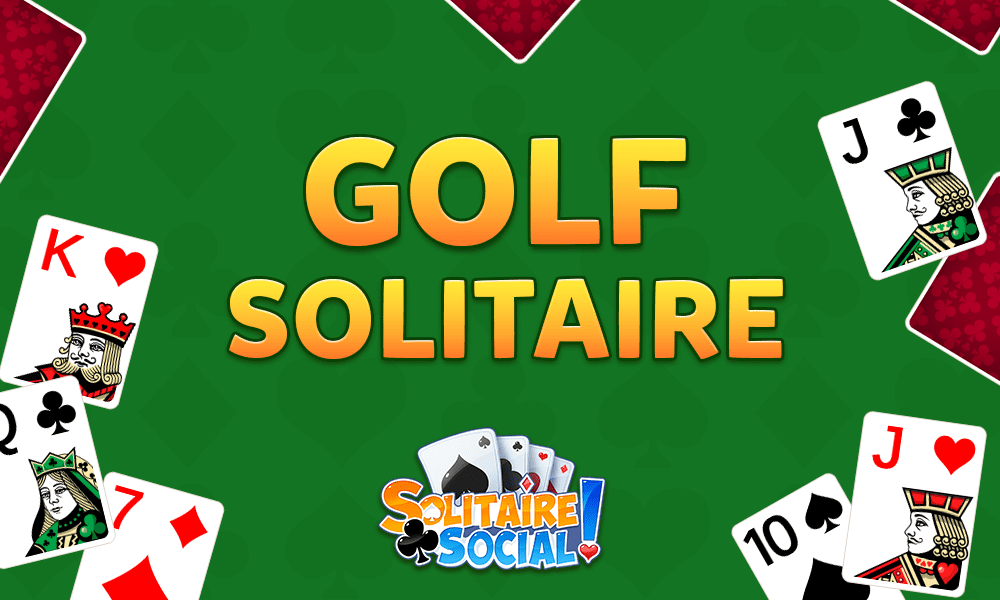
This guide equips you with the knowledge to effectively market card games in the dynamic mobile environment. By understanding your audience, leveraging the right ad networks and creatives, and staying abreast of advertising trends, you can position your card game for success in 2024.
Unlock Future Gaming Success! Follow Us for Exclusive Insights! 🎮
Ready for more? Follow for exclusive 2024 insights and strategic recommendations. 🌐
Curious to experience the power of our services? Sign up for a Free Trial today! 🕹


